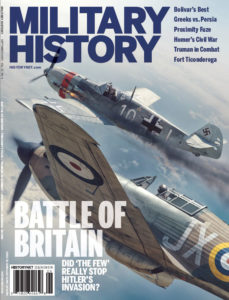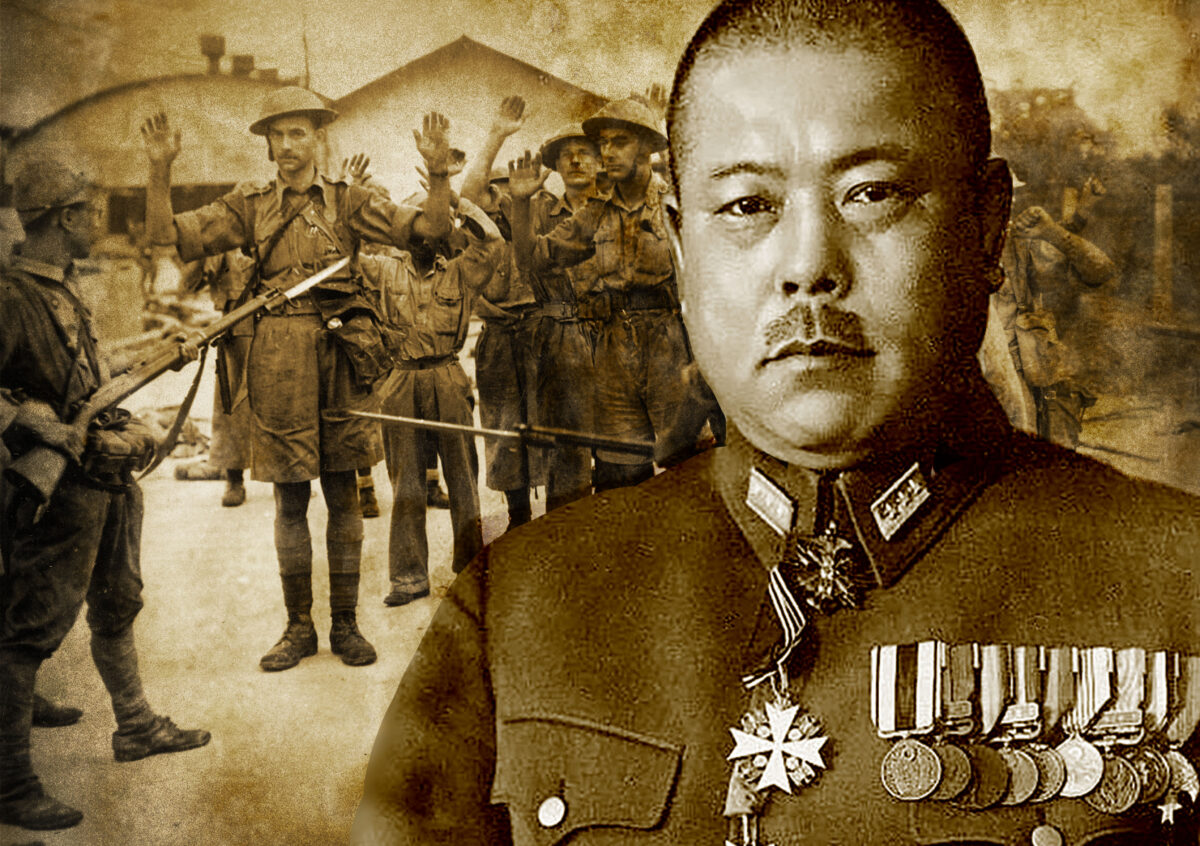In 1945 a young Marine with an aptitude for languages landed in the midst of a war crimes trial with international ramifications
Arriving for his arraignment at the U.S. High Commissioner’s Residence in Manila, Philippines, on Oct. 8, 1945, Gen. Tomoyuki Yamashita looked solemn but self-confident in his mustard-green field uniform decorated with a general officer’s lapel insignia and four rows of ribbons. Completing his ensemble were brightly polished boots with gold spurs. Though the general stood only 5 feet 7 inches, one of his appointed American defense attorneys described him as “a large man for a Japanese.…His neck was thick and bull-like, and the back of his neck and head ran in almost a vertical line from the white shirt collar which was turned over his tunic collar.” Also present in court was U.S. Marine Corps Maj. Harry D. Pratt, the general’s appointed translator. Pratt later recalled Yamashita’s “distinguished appearance” as he stood before a military commission of five U.S. general officers to hear the charges against him. “He made no angry attacks and gave answers in a clear voice.”
Less than a month had passed since Yamashita’s arrest, on Sept. 2, 1945. Presiding officer Maj. Gen. Russel Burton Reynolds read aloud the indictment holding Yamashita responsible for all “brutal atrocities and other high crimes” committed between Oct. 9, 1944 and Sept. 2, 1945, by troops under his command in Manila and elsewhere in the Philippines. After the charge was read in Japanese, Yamashita firmly replied in that language, “Not guilty.” The arraignment ended within minutes, and the general was returned to his cell in New Bilibid Prison, 15 miles south of Manila. His trial, which opened on October 29, set a precedent in international law as well as in American military and constitutional law.
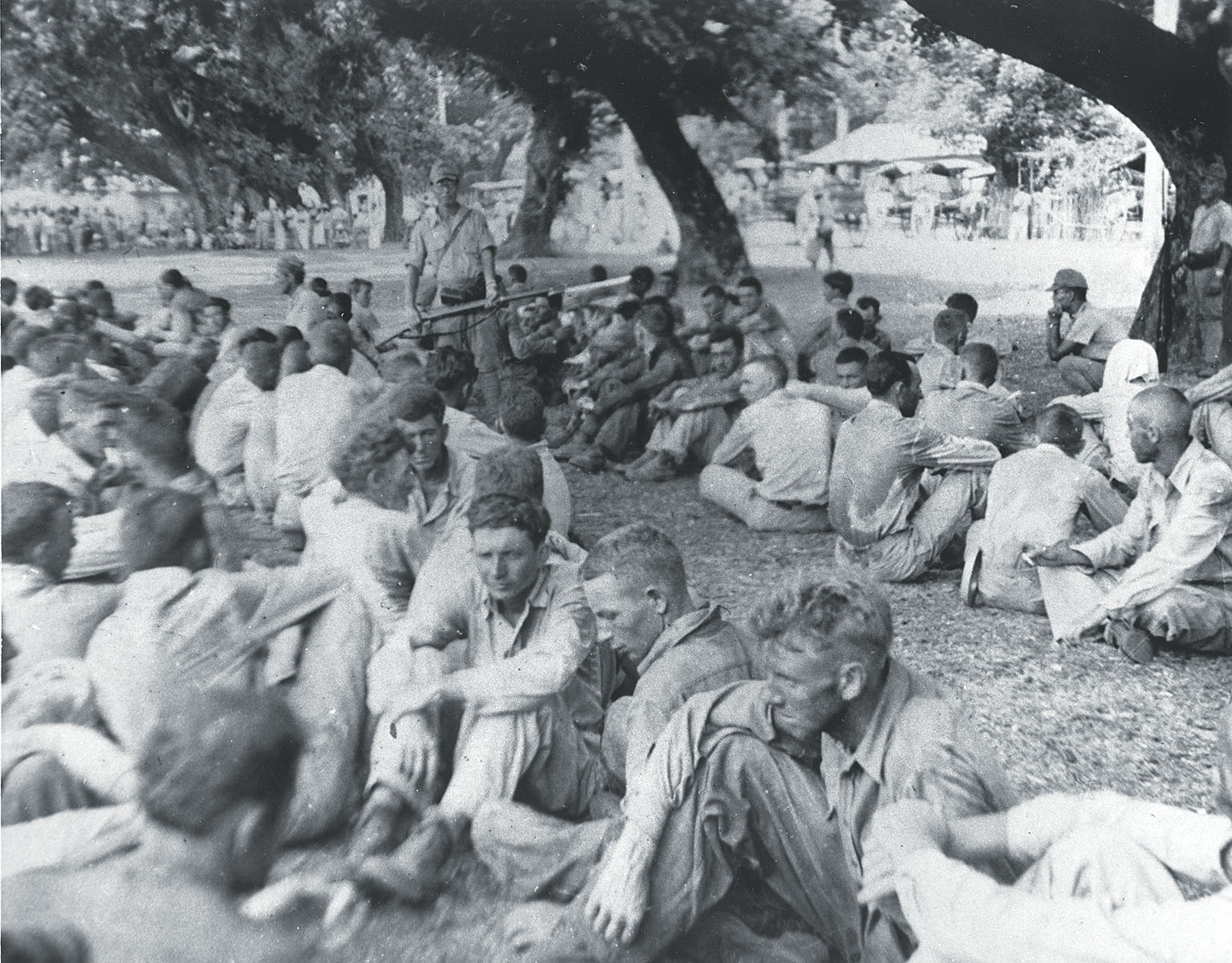
At his side throughout the proceeding was Pratt, who was somewhat surprised to find himself involved in the historic event. At just 26 years old and with only a few years of Japanese language study behind him, the young Marine had been assigned at short notice as the general’s chief interpreter.
Pratt’s presence in the Manila courtroom was the result of converging paths of education and experience.
Born in Los Angeles on Dec. 26, 1918, Harry Douglas Pratt was fascinated by languages from an early age. After graduating as a French major from UCLA in 1940, he applied to the Marine Corps and was accepted for officer training at Quantico, Va. On completion of the course he was commissioned a second lieutenant and assigned to the 2nd Marine Division in San Diego. On Sunday, December 7, Pratt was on weekend leave in Los Angeles when he heard about the attack on Pearl Harbor. He raced back to San Diego to find his regiment under orders to deploy to Wake Island. “By the time enough shipping was found, Wake was gone,” Pratt recalled. Instead, the regiment sailed to American Samoa in early January 1942 on three converted Matson luxury passenger liners, with all the comforts of nice beds and good food—“a great way to start a war,” he said with a laugh.
In response to an urgent need for interrogators and translators, Capt. Ferdinand Bishop was directed to start a Japanese language course in Samoa. French major Pratt volunteered to become “a full-time student” for the next six months. The shanty amid a stand of palms that served as Bishop’s schoolhouse belied the intensity of the course—of the 16 Marines who began the study, only the recently promoted Capt. Pratt and seven enlisted men completed it.
Shortly before the 1st and 2nd Marine divisions invaded Guadalcanal on August 7, Pratt was assigned as an assistant intelligence officer to the 8th Marine Regiment, which was sent to reinforce Guadalcanal in early November. Pratt recalled it as “an unopposed landing, except for Japanese bombing attacks.” As the regiment moved into heavy jungle along the Matanikau River, however, “there was plenty of incoming fire.”
Thanks to his language skills, Pratt was soon transferred out of the line to 1st Marine Division headquarters, to assist in interrogating Japanese prisoners of war. Although few Japanese soldiers surrendered on Guadalcanal, among the POWs were downed aviators and survivors of sunken ships. Extracting information from them wasn’t too difficult, Pratt recalled. “We simply told them we were sending information about their capture to the International Red Cross, which would inform the Japanese government. Inevitably they would respond, ‘Don’t do that; we’ll tell you what you want to know.’ They knew that if information about their capture reached Japan, their families would be disgraced forever.” Japanese service members considered surrender a humiliation worse than death.
On Jan. 31, 1943, the 8th Marines shipped out from Guadalcanal to refit in Wellington, New Zealand. Pratt’s assignment on the voyage south was to supervise 30 Japanese POWs. “My group of six interpreters provided all the communications between the ship and the POWs,” he said. “Upon arrival in Wellington we accompanied them to a camp in the hills above the city and worked with the New Zealand staff until they felt comfortable handling the Japanese.”
The next island operation took Pratt to Tarawa atoll, where he went ashore at Betio on November 21, the second day of the grueling four-day battle. As the tide was out, the landing craft dropped him and his fellow Marines some 500 yards from the beach. Shouldering his M1 carbine, Pratt balanced a box of Japanese dictionaries atop his helmet. As the men waded in, they came under enemy fire. Shrapnel struck Pratt in the left leg, but he managed to make it ashore. The Marines suffered 1,009 killed and 2,101 wounded on Tarawa. Nearly all of the 4,800-plus defenders were killed. Of the 146 prisoners taken, only 17 were Japanese. The rest were conscripted Korean laborers.
In the wake of battle Pratt escorted the Korean POWs from Tarawa to Pearl Harbor, Hawaii. There he reported to the Joint Intelligence Center, Pacific Ocean Areas, to translate captured documents. In July 1944 Pratt and close friend Lt. Elmer Stone were assigned to the Navy School of Oriental Languages at the University of Colorado in Boulder, which offered immersion lessons in reading, translating and conversation. Classes ran from Monday through Friday with exams on Saturday mornings. On Saturday nights Capt. Bill Croyle and his wife hosted gatherings with “splendid jazz”—though Pratt sometimes skipped the fun to memorize his kanji (Japanese written characters).
After graduating in July 1945, Pratt returned to the Pacific to work for the Allied Translator and Interpreter Service (ATIS) at Gen. Douglas MacArthur’s G-2 (Intelligence) Section in Manila. There Pratt and other graduates of the Boulder language school, as well as hundreds of Nisei (second-generation Japanese-Americans), translated enemy documents, field manuals and the personal papers of captured Japanese. ATIS troops also interrogated POWs and wrote propaganda leaflets urging the enemy to surrender.
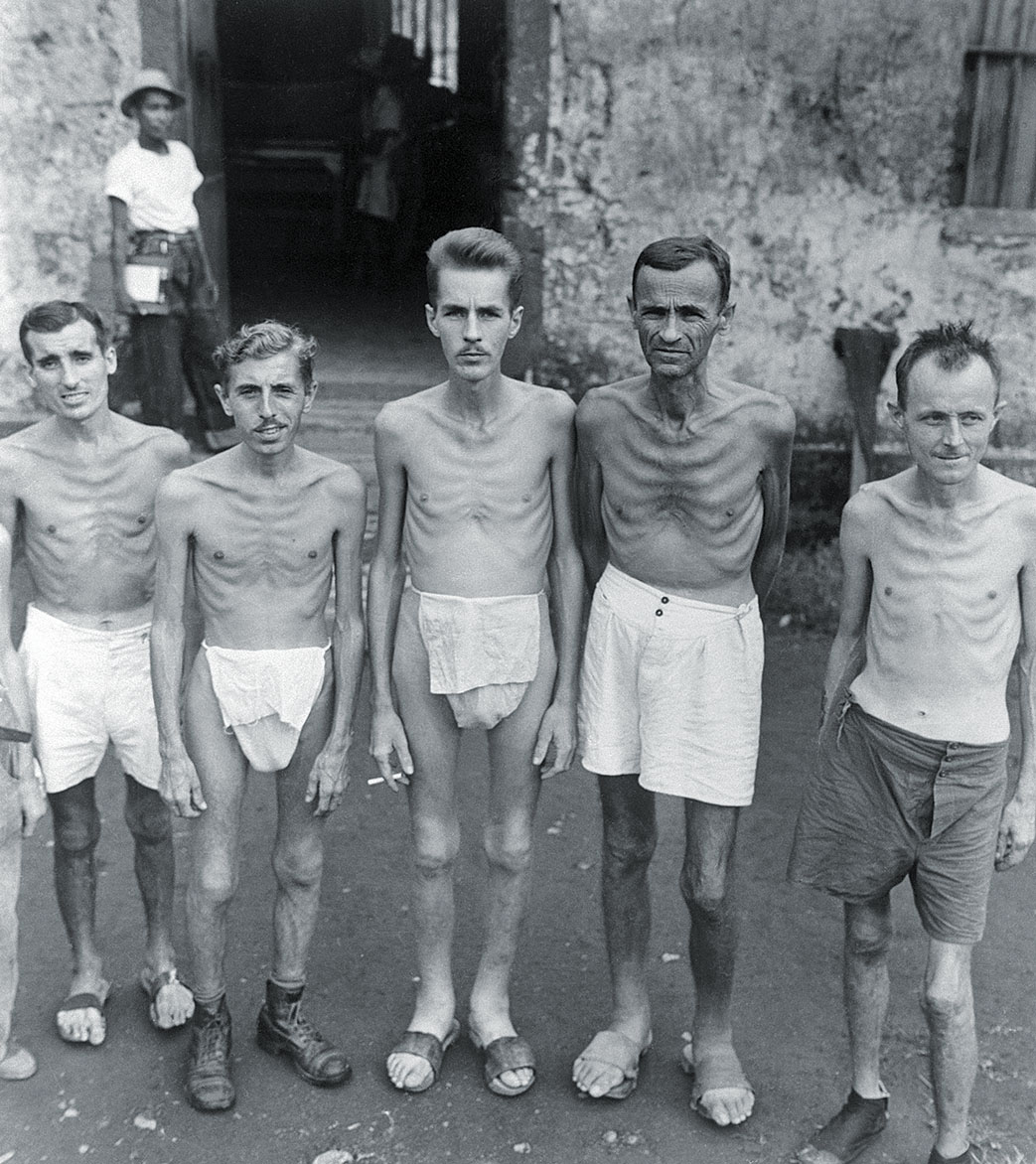
The day after the formal Japanese capitulation aboard USS Missouri in Tokyo Bay on September 2 Pratt was assigned to ATIS headquarters in Tokyo. Within a month, however, he was suddenly transferred back to Manila to serve as chief interpreter for the newly formed U.S. military commission.
In his role as Supreme Commander for the Allied Powers MacArthur had exonerated Emperor Hirohito and his family members, but he was determined to arrest and indict those members of the Japanese military who had committed wartime atrocities in the Philippines. The military commission convened by MacArthur comprised five U.S. Army generals, none of whom were attorneys. While those on the commission might not have been aware of legal precedent, MacArthur and his prosecutors in the Manila trial knew the case against Yamashita was novel. Never before had a military commander faced charges of “command responsibility” for crimes committed by his troops without the commander’s orders or approval. The argument presented by Yamashita’s defense team focused on whether he had been in communication with, and in control of, those who had committed the atrocities.
Pratt and the six Army lawyers assigned to defend Yamashita had only days to interview him before his October 8 arraignment. Going into his private interview with the accused, the young interpreter was nervous. “Like all of us who went through the Pacific operations, there was no ‘love lost’ for the Japanese,” Pratt recalled. “However, my experience at Boulder clearly showed the necessity of treating these officers with the respect their position deserved.”
On entering a small room annexed to the New Bilibid Prison chapel, Pratt exchanged greetings with the uniformed Yamashita and his chief of staff, Lt. Gen. Akira Muto. “The 59-year-old Yamashita was rather relaxed, while Muto was more reserved and formal,” Pratt said. Both openly discussed the fighting in Manila and denied all charges. “Yamashita had decided that the defense of Manila was impossible and took his forces north towards Baguio, in northern Luzon, leaving the city under the control of the navy, which committed terrible atrocities.” Yet he claimed he “knew nothing about this and could have done very little had he known, because he had no contact with the city.”
As the only available field-grade officer with the necessary combat experience and language skills, Pratt was an ideal choice for Yamashita’s interpreter. His responsibilities included all interpretation for the accused on behalf of both the defense and the prosecution. Pratt delegated most of the legwork to the Nisei, while ensuring they employed correct military terminology and properly addressed senior Japanese officers. Interpreters were also needed to translate three dialects of Filipino, three of Chinese and one of Spanish for testifying witnesses.
In general Pratt found the Nisei highly competent, though limited in their knowledge of combat operations in the Pacific and military terminology concerning weapons and Japanese army usage. “I felt that my job was to ensure that the questions put to the accused were a correct rendition of the English used by the U.S. and Philippine officers of the prosecution,” he said.
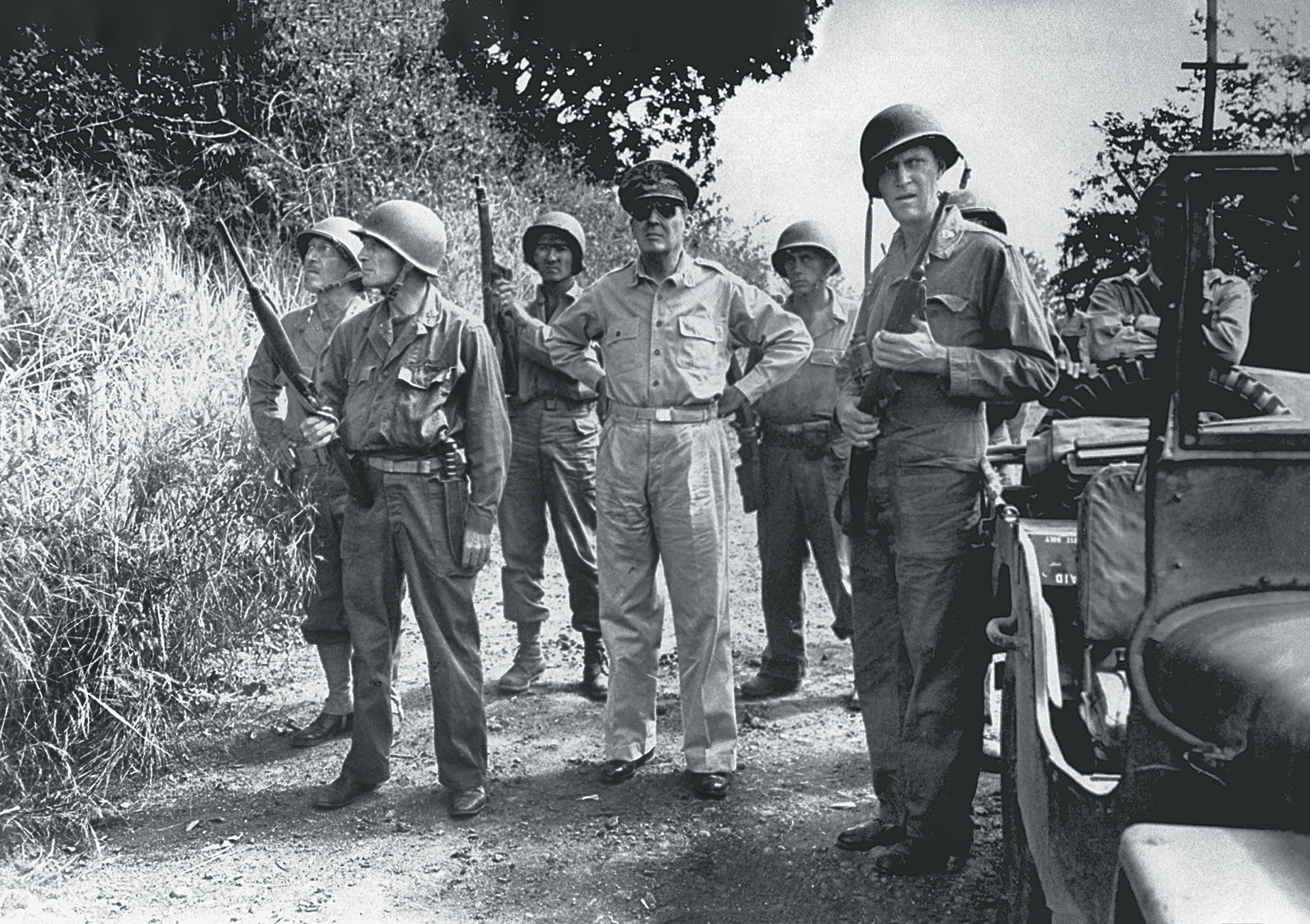
Also attending Yamashita was his own personal interpreter—Masakatsu Hamamoto, a Harvard-educated Japanese army colonel. Lieutenant General Masaharu Homma, facing trial next for his role in the infamous Bataan Death March, spoke English and said he understood the testimony. Both the defense and prosecution had their own translators. However, the accuracy of the interpreters came into question. According to a New York reporter covering the proceeding, Hamamoto grimaced whenever questions were improperly worded or Yamashita’s answers were incorrectly translated. It was Pratt’s responsibility to resolve any such uncertainties.
The trial lasted more than a month, running from 8:30 a.m. to 5:30 p.m., with an hour lunch break, every day except Sunday. Over that time the prosecution presented 402 exhibits—photographs, motion-picture footage, newspaper accounts of atrocities, etc.—and called some 280 witnesses to testify. Pratt and his team of translators listened to testimony from hundreds of people attesting to murder, rape, torture and other outrages committed by Japanese military personnel against Filipino civilians and Allied POWs.
The defense team fought back at every cross-examination and argued repeatedly that not a shred of evidence proved Yamashita either ordered any of the atrocities or had any knowledge of them. When the general took the stand, he explained that after mid-November 1944 all communication ceased between his headquarters on Luzon and his troops in the Visayan Islands and on Mindanao, while the pressure of U.S. artillery attacks repeatedly forced him to move his headquarters higher into the mountains.
Pratt insisted the defense team did “a hell of a job,” despite facing such disadvantages as the admissibility of hearsay evidence. The interpreter himself believed Yamashita had not been informed of the brutality of Japanese units in Manila. “Command responsibility may be a valid charge when you’re capable of exercising that command,” he said. “In Yamashita’s situation…I find it of dubious validity.”
However, Pratt did question the general’s previous actions in Malaya and Singapore, where he’d earned the sobriquet “Tiger of Malaya.” Given the lingering bitterness over his swift victories there and in the Philippines, Yamashita was undoubtedly guilty in the eyes of most Allies and Filipinos even before the trial began.
At 2 p.m. on Dec. 7, 1945—four years to the day from the Pearl Harbor attack—attorneys, interpreters, journalists, cameramen and radio broadcasters filled the Manila courtroom to hear the commission’s verdict. Flash bulbs popped and newsreel cameras hummed as MPs led Yamashita to the front of the room. He was directed to stand before Maj. Gen. Reynolds, who was seated behind a row of microphones at a long wooden table with his fellow commissioners. Pratt stepped to Yamashita’s side to translate the sentence. It took several minutes for Reynolds to read the complete charge for violation of the “laws of war,” a summation of the presentations by the prosecution and the defense, and the commission’s own finding that a commander “may be held responsible, even criminally liable, for the lawless acts of his troops, depending upon their nature and the circumstances surrounding them.”
Reynolds then paused to allow Yamashita to make a statement, read in English by Hamamoto. In it the general swore before his Creator he was “innocent of the charges” made against him. Reynolds then read the verdict, which Pratt translated aloud into Japanese: “Accordingly, upon secret written ballot, two-thirds or more of the members concurring, the commission finds you guilty as charged and sentences you to death by hanging.” A moment of silence swept the courtroom. Yamashita remained calm and expressionless. “He was very stoic throughout,” the interpreter recalled. “I believe he knew all along what the sentence would be.”
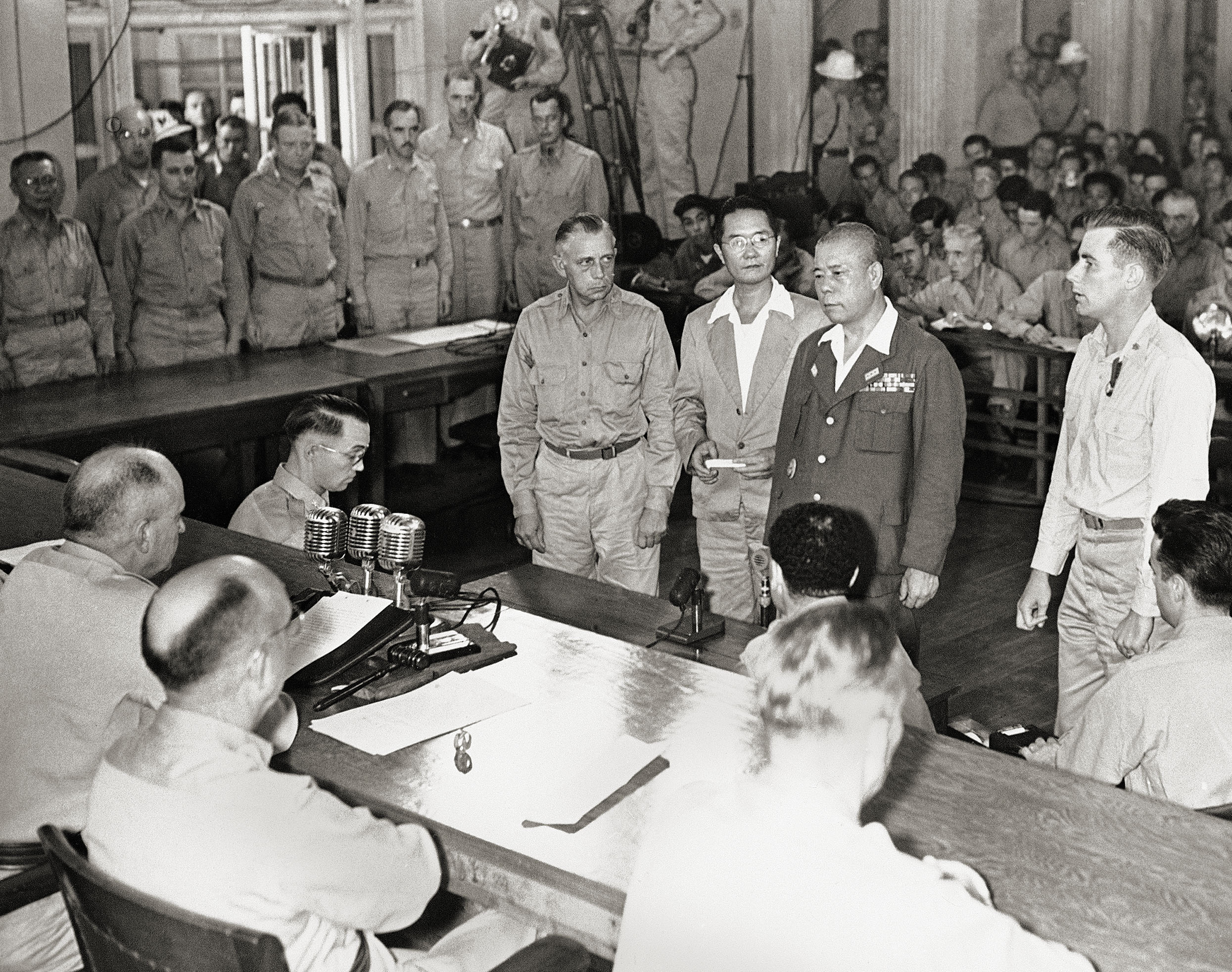
While Pratt’s job was complete, Yamashita’s defense team filed an emergency petition to the U.S. Supreme Court for a stay of execution until the court could agree to hear the case. On December 20 the justices scheduled an oral argument, held on Jan. 7, 1946. Unfortunately for Yamashita, on February 4 the court upheld his conviction, though Associate Justices Frank Murphy and Wiley Blount Rutledge wrote vigorous dissenting opinions. Essentially, Murphy said there was no legal precedent in international law permitting a military commission to find a commander liable for any actions of his troops. “No one in a position of command,” he argued, “can escape those implications. Indeed, the fate of some future president of the United States and his chiefs of staff and military advisers may well have been sealed by this decision.” Rutledge likewise deemed the trial “unprecedented” in legal history.
In contrast to the joyous crowds dancing in the streets of Manila over the news of Yamashita’s death sentence, more than 86,000 people in Japan signed a petition pleading with MacArthur to commute the sentence or at least allow the condemned general an honorable death by hara-kiri.
Perhaps surprising, some Japanese POWs were infuriated by Yamashita’s unwavering denial of responsibility, one reflecting, “Since he knows he can’t get off anyway, you’d think he could act more like a general and take responsibility for the crimes of his subordinates.”
On Feb. 23, 1946, Yamashita was stripped of his uniform and decorations, dressed in worn U.S. Army fatigues and led from his tent to a wooden gallows at the Los Baños prison camp, 35 miles south of Manila. After making a final statement, he climbed the 13 steps to the scaffold, prayed in Japanese for Hirohito, bowed his head to the noose and seconds later dropped through the trap.
Years after the trial Pratt reflected on the resulting “Yamashita standard,” which holds that a commander has a duty to be aware of, and is always responsible for, the actions of his troops. “It was a fascinating experience, but it was also one which I found, as a career officer, to be very worrisome,” he later wrote. “War crimes trials are a function of the victors. I could then and still find that this law of command responsibility might well be charged against our own commanders under circumstances beyond their control.”
After the war Pratt served in headquarters at Marine Corps Station Quantico as G-2 (chief of intelligence) and was later transferred to the U.S. Embassy in Tokyo as the naval attaché. He retired from the Marine Corps as a colonel in 1963. Over the next several decades he pursued a successful business career, first as a vice president with Pepsi Cola in the Far East and later with Royal Crown Cola in Manila. Along the way Pratt found time to marry twice and help raise six daughters. On retirement he built a house in Sonoma, Calif., where he and wife Grace led an active social life. Harry Pratt died on Nov. 6, 2015, and was buried at the Sonoma Veterans’ Cemetery with full military honors—a Marine to the end. MH
Suzanne Pool-Camp is a freelance writer based in Fredericksburg, Va. She and husband Col. Richard Camp, U.S. Marine Corps (Ret.), interviewed Col. Harry Pratt in 2014. The co-author of Who Financed Hitler (1978), she has a juris doctor degree from Salmon P. Chase College of Law. For further reading she recommends Yamashita’s Ghost: War Crimes, MacArthur’s Justice and Command Accountability, by Allan A. Ryan; Deciphering the Rising Sun: Navy and Marine Corps Codebreakers, Translators and Interpreters in the Pacific War, by Roger Dingman; and Rampage: MacArthur, Yamashita and the Battle of Manila, by James M. Scott.
This article appeared in the May 2021 issue of Military History magazine. For more stories, subscribe here and visit us on Facebook:
